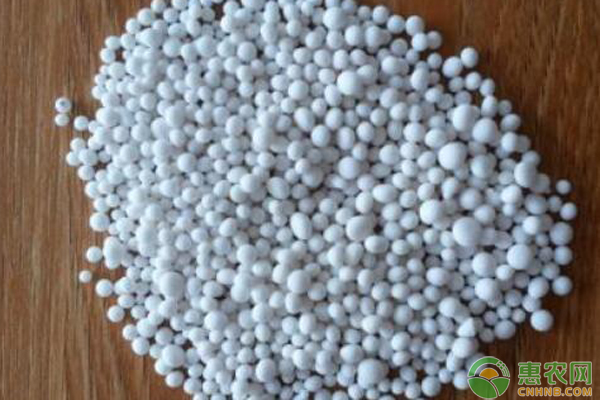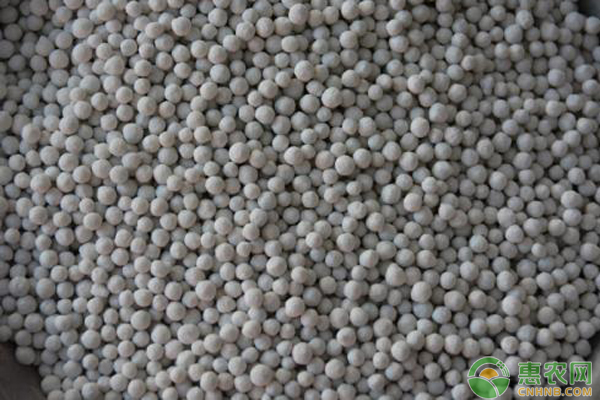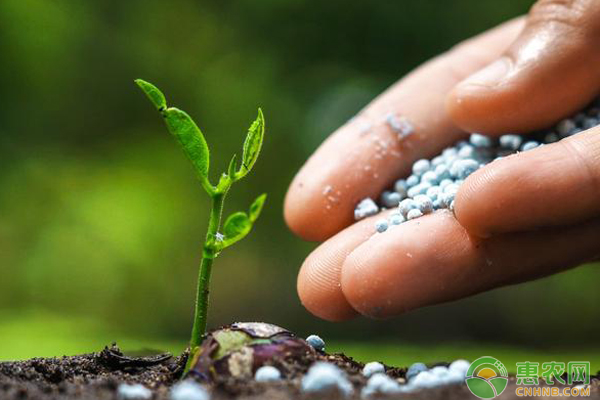Xiaobian found a problem. I don't know when, in agricultural planting, agricultural practitioners began to have great fear of "chlorine" fertilizers, and even formed a situation of "chlorine" discoloration. Why is this so? Can chlorine really not be applied to crops? Let's take a closer look. Farmers talk about the cause of "chlorine" discoloration The reason is that “chlorine†is a scar to the crops, and the farmers are scared. Coupled with the experts and the media’s emphasis on the harm of chlorine crops, the growers heard that the fertilizer contained “chlorine†simply. I will not use it. But Xiaobian wants to tell everyone that almost all plants contain chlorine, and "chlorine" has a very important role in plants. Some chlorine-tolerant crops will also have some symptoms if they are deficient in chlorine, causing damage to crop quality and reduced yield. Today, I will give you a detailed and straightforward introduction to the role, hazards and application points of the "beast" chlorine fertilizer: First, the content and distribution of chlorine in plants Chlorine is widely found in nature. Among the eight essential trace elements, plants have the highest chlorine content, and plants containing 10% chlorine are not uncommon. In plants, chlorine exists in an ionic state and has a high fluidity. The absorption of chlorine by plants is an active absorption process with a reverse chemical gradient, and the absorption rate is generally fast. The transport of chlorine in plants may be dominated by the symplast pathway. The distribution of chlorine is characterized by more stems and leaves and less kernels. Second, the nutritional function of chlorine 1. Participate in photosynthesis Chlorine as a co-factor of manganese participates in the photolysis reaction of water, promotes photosynthetic phosphorylation and synthesis of ATP. The hydrogen ions and electrons produced by photosynthetic reaction are necessary for photosynthesis of green plants. In the absence of chlorine, plant photosynthesis will be inhibited, and leaves will be chlorotic and necrotic. 2, adjust the stomatal movement In some plants (such as broad beans), the chloroplasts in the guard cells are fully developed, and the inflow of K+ in the stomatal opening can be offset by the consumption of medium equivalent concentrations of malic acid in the guard cells. Some other plants, such as onions, have a slightly poorer effect on the defense of chloroplasts, mainly due to the lack of starch for malic acid synthesis. The influx of K+ must have an inflow of equivalent anions (mainly chloride ions). Therefore, the opening of the onion pores is hindered when chlorine is deficient. 3. Activate H+-pump ATPase There is a H+-pump ATPase that requires chloride activation on the tonoplast. The activated enzyme acts as a proton pump on the tonoplast to transport H+ from the protoplast to the vacuole to maintain normal metabolic activity of the cell and promote the formation of asparagine. Therefore, in the long-distance transport of soluble nitrogen, chlorine has an important influence on the metabolism and transportation of nitrogen. 4, inhibit disease occurrence According to the study, at least 15 different leaf and root diseases of 10 different crops are alleviated by chlorine application, such as winter wheat total erosion, spring wheat leaf rust, corn stem blight, and potato hollow disease. Cl- can inhibit the absorption of NO-3 by plants, thereby reducing the concentration of NO-3 in crops. Therefore, root rot is rarely observed in crops with low NO-3 content. In addition, the inhibitory effect of Cl- on the disease may be that chlorine can inhibit the nitrification of ammonium nitrogen, and the crop can release a large amount of hydrogen ions while absorbing ammonium nitrogen, increase the acidity of the soil, and inhibit the growth of microbes. . 5, other effects Among chemical anions, Cl- is the most stable ion, which maintains charge balance with cations and maintains intracellular osmotic pressure. At the same time, chlorine is a component of certain hormones in plants. Chlorine auxin can be isolated from bowl beans and proved to be 4-chloroindole-3-acetic acid. The change in ethylene content is also affected by the promotion and regulation of Cl-. Third, the lack of excess chlorine and chlorine symptoms 1, chlorine deficiency symptoms Chlorine deficiency is generally characterized by chlorosis and wilting of the leaves; at the same time, root growth is blocked, thickened, and the root tip becomes rod-shaped. When the sorghum and cabbage are deficient in chlorine, the leaves are atrophied, but the roots are short and thick, and are rolled into a cup shape from the leaf edge. Others are typically tomato, beet, and wheat. Chlorine deficiency in tomatoes: When tomatoes are deficient in chlorine, the tip of the leaves is wilting, and then the leaves are chlorotic, and then they are bronzed. They gradually become necrotic throughout the whole leaves, and the roots grow poorly. The roots are thin and short, and the lateral roots are few. Performance is not the result. Chlorine in sugar beet: When the sugar beet is deficient in chlorine, the proliferation rate of leaf cells is reduced, the leaf growth is slow, the leaf area is small, and the veins are chlorotic. Chloride deficiency in wheat: physiological leaf spot disease occurs in wheat with chlorine deficiency, and root and stem disease is wilted when the chlorine deficiency is severe. 2. The adverse effects of excessive chlorine Chloride ions inhibit the absorption of nitrate and dihydrogen phosphate. Chloride ions are more advantageous than them, so the concentration advantage makes the absorption of the above two ions unfavorable, resulting in antagonistic phenomena. High chlorine inhibits dehydrogenase activity and disrupts plant metabolism. High chlorine can destroy some cells and subcellular structures in plants. At present, more research is done to reduce the quality of plants. If the chlorine content in the tobacco leaves is more than 1%, the flammability and taste will be greatly affected. 3, symptoms of chlorine poisoning Lack of chlorine in crops is rarely found in large fields. Symptoms of excessive chlorine include: leafy burns, early maturing yellowing and leaf loss. Chlorine poisoning of sugar beet: The seedlings are slow, the leaves of the seedlings are dark, and the leaves become smaller, thicker and more brittle. Peanut chlorine poisoning: light leaf color, low chlorophyll content, poor root nodule development. Chlorine poisoning of tobacco: When the chlorine is absorbed too much, it will inhibit the growth of tobacco plants. The chlorophyll can not be decomposed in time to make the leaves become thick green, thick, fragile, the leaves are sunken, and the leaves are smooth; after drying, the leaves are highly hygroscopic and burn Poor sex, seaweed-like astringency, extremely poor quality Chloride poisoning of fruit trees: causing the whole plant to die, and the excess chlorine leaves are "burned" 4, chlorine and chlorine-free crops Chlorine-tolerant crops: barley, corn, spinach, beets, millet and tomatoes. Avoid chlorine crops: tobacco, kidney beans, potatoes, lettuce and some legumes and grapes and other fruit trees. Fourth, commonly used chlorine fertilizer Potassium chloride: colorless slender diamond or cubic crystal, or white crystalline small particle powder, which looks like salt, but it is odorless and salty. Therefore, it is generally used as an additive for low sodium salts and minerals. The chlorine content is 48%, which can be used as base fertilizer and top dressing, but it is not suitable for seed fertilizer. 5. Application of chlorinated fertilizer 1. Application of chlorinated fertilizer for crops Chlorinated fertilizers should be applied preferentially to crops with high chloride tolerance or moderate chlorine tolerance; crops with weak tolerance, such as tobacco, tea, lettuce, grapes, etc., are generally not applied or applied less. 2, due to the application of chloride fertilizer Chlorinated fertilizers should be used in areas with high rainfall or seasons and irrigation conditions. In the rainy season, if the chlorinated fertilizer is applied, it is easy to cause the chloride ion to be lost with water, so the chloride ions brought to the soil with the fertilizer will not cause "chlorine damage" due to accumulation. In salinized soils, chlorinated fertilizers should be used less or not because of higher chloride ion content. 3. Fertilization due to chemical fertilizer characteristics Chlorinated fertilizer can be used as base fertilizer or top dressing, and it is not suitable for seed fertilizer. It can be applied in the middle and late stages of crop growth, and should be applied less or not at the seedling stage. 4, containing chlorinated fertilizer should be applied early Chloride ion can inhibit seed germination and reduce germination rate and emergence rate. Therefore, the application of chlorinated fertilizer should be applied early and deep, so that the soil can be adsorbed, chloride ions are leached, and the root layer of the crop is reduced by chlorine. 5, containing chlorinated fertilizer should be mixed with organic fertilizer When applying the chlorinated fertilizer, the application of fully decomposed organic fertilizer can improve the fertilizer effect of the chlorinated fertilizer and reduce the adverse effects caused by the chloride ion. Through the introduction of Xiao Bian, everyone should understand that when applying chlorine fertilizer, it is indeed a “beast†for the “bogey chlorine†crop, or if it is applied excessively, but it is not enough if the plant is missing, so scientific and rational use of chlorine fertilizer is The most correct choice. Therefore, farmers can use chlorine fertilizer with confidence. Tuberculosis (TB) is a potentially fatal contagious disease that can affect almost any part of the body but is mainly aninfection of the lungs. It is caused by a bacterial microorganism, the tubercle bacillus or Mycobacterium tuberculosis.Although TB can be treated, cured, and can be prevented if persons at risk take certain drugs, scientists have never comeclose to wiping it out. Few diseases have caused so much distressing illness for centuries and claimed so many lives. Medicine For Tuberculosis,Streptomycin Tuberculosis,Kanamycin Tuberculosis NOUVASANT GROUP LTD. , https://www.nouvasant.com

